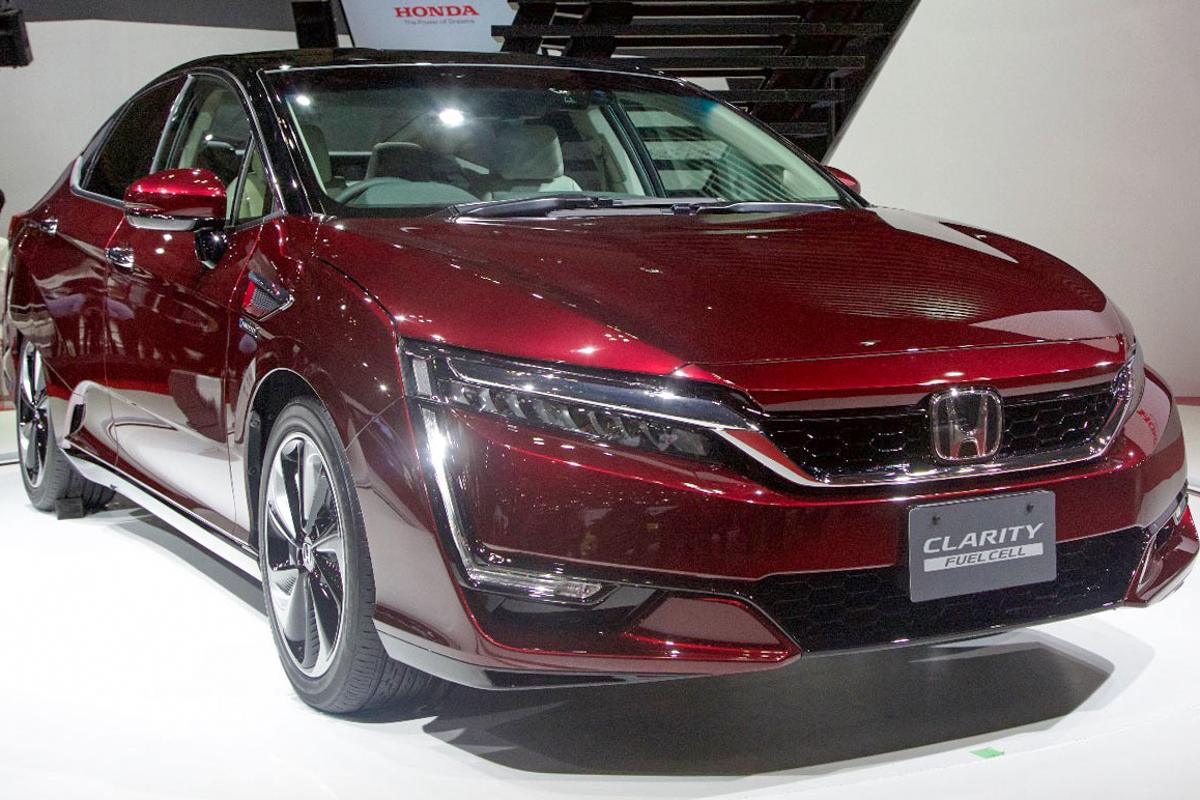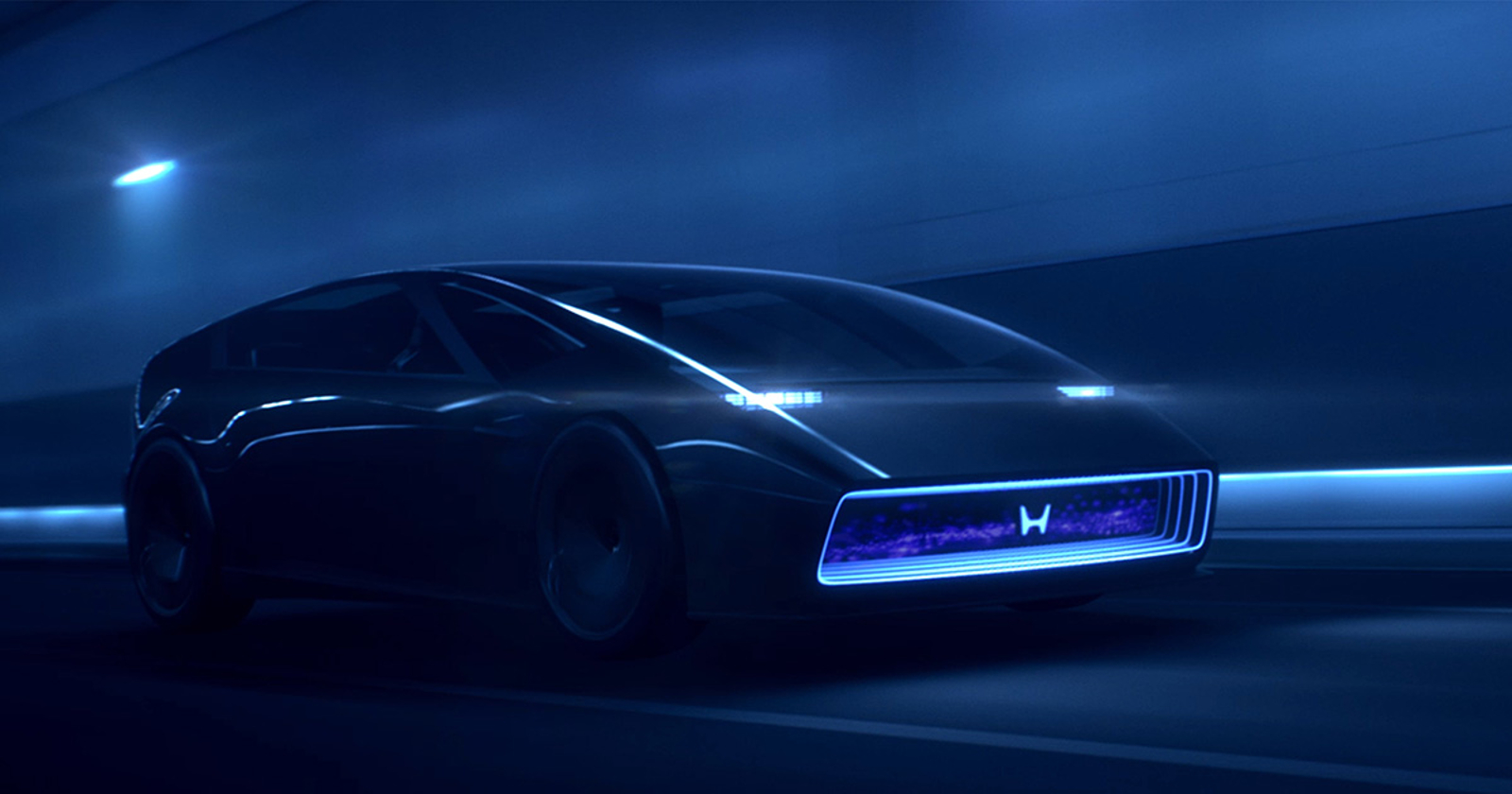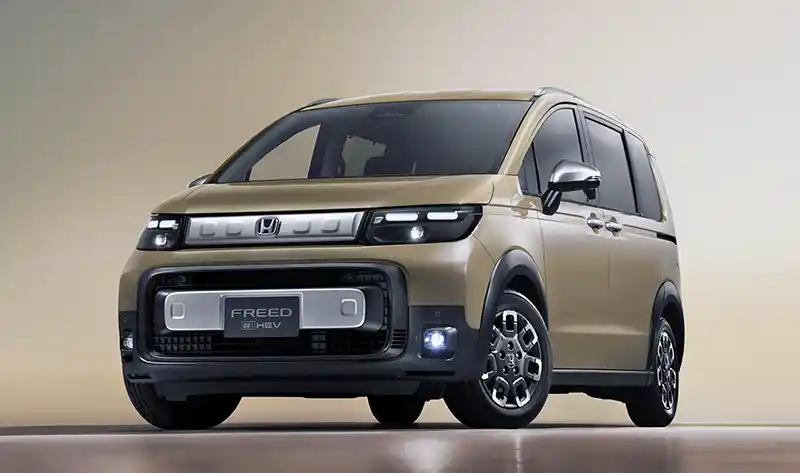Prepare to witness the dawn of a new era in sustainable transportation as we delve into the realm of the 2025 Honda Clarity Fuel Cell. This revolutionary vehicle embodies the cutting-edge of hydrogen fuel cell technology, promising an exhilarating driving experience while simultaneously safeguarding the environment.
Join us on an exploration of the Clarity Fuel Cell’s sleek exterior design, advanced interior features, and the groundbreaking powertrain that sets it apart from the conventional. Discover the environmental benefits and cost-saving advantages that make this vehicle a game-changer in the automotive industry.
Powertrain and Performance

The 2025 Honda Clarity Fuel Cell boasts an advanced powertrain that seamlessly combines hydrogen fuel and electric energy.
The centerpiece of this system is the fuel cell stack, a compact unit that generates electricity through an electrochemical reaction between hydrogen and oxygen. The stack delivers an impressive power output of 174 horsepower and 221 lb-ft of torque, providing ample acceleration and responsive handling.
The hydrogen storage system comprises two high-pressure tanks that can hold up to 5.6 kg of hydrogen. This enables a driving range of approximately 350 miles, allowing for extended journeys without the need for frequent refueling.
Refueling the Clarity Fuel Cell is a quick and convenient process, taking only a few minutes at dedicated hydrogen stations. The growing hydrogen infrastructure, particularly in urban areas, ensures accessibility and ease of use for fuel cell vehicles.
Fuel Economy and Emissions
The Honda Clarity Fuel Cell is an incredibly efficient vehicle that emits zero emissions. This means it has no tailpipe emissions, which contribute to air pollution and greenhouse gases.
Fuel Economy
The Clarity Fuel Cell has an impressive fuel economy rating of up to 68 MPGe. This means that it can travel up to 68 miles on the equivalent of one gallon of gasoline. This is significantly higher than the fuel economy of traditional gasoline-powered vehicles, which typically get around 25-30 MPG.
Environmental Benefits
The zero-emission nature of the Clarity Fuel Cell makes it an environmentally friendly choice. It doesn’t contribute to air pollution or greenhouse gas emissions, which can damage the environment and contribute to climate change. Additionally, the Clarity Fuel Cell doesn’t require any fossil fuels to operate, which can help reduce our dependence on foreign oil.
Cost Savings
The Clarity Fuel Cell can also save you money on fuel costs. Hydrogen fuel is typically cheaper than gasoline, and the Clarity Fuel Cell’s high fuel economy means that you’ll need to fill up less often. Additionally, many states and municipalities offer incentives for the purchase of fuel cell vehicles, which can further reduce the cost of ownership.
Technology and Features

The Clarity Fuel Cell comes with a suite of advanced safety features and driver-assistance systems to enhance your driving experience and protect you on the road.
It boasts the Honda Sensing suite, which includes features like lane departure warning, lane keeping assist, adaptive cruise control, and automatic emergency braking. These features work together to monitor your surroundings and intervene if necessary, helping to prevent accidents and keep you safe.
Infotainment and Connectivity
Inside the Clarity Fuel Cell, you’ll find a user-friendly infotainment system that offers a range of connectivity options.
- The 8-inch touchscreen display is clear and responsive, and it supports Apple CarPlay and Android Auto, so you can easily integrate your smartphone with the car’s system.
- The system also includes a navigation system, a premium audio system, and Bluetooth connectivity for hands-free phone calls and music streaming.
Design
The Clarity Fuel Cell’s exterior is sleek and modern, with a distinctive hydrogen-powered design.
- The car’s body is made of lightweight materials, which helps to improve fuel efficiency.
- The interior is spacious and well-appointed, with comfortable seats and a premium feel.
Comparison with Competitors
The Clarity Fuel Cell faces stiff competition in the burgeoning hydrogen fuel cell vehicle market. Key rivals include the Toyota Mirai and the Hyundai Nexo.
Specifications, Features, and Pricing
The following table compares the key specifications, features, and pricing of the Clarity Fuel Cell against its rivals:
| Feature | Clarity Fuel Cell | Toyota Mirai | Hyundai Nexo |
|—|—|—|—|
| Powertrain | Hydrogen fuel cell | Hydrogen fuel cell | Hydrogen fuel cell |
| Horsepower | 174 hp | 182 hp | 161 hp |
| Torque | 221 lb-ft | 221 lb-ft | 291 lb-ft |
| Fuel capacity | 5.6 kg | 5.6 kg | 6.3 kg |
| Driving range (EPA estimated) | 360 miles | 357 miles | 380 miles |
| Refueling time | 3-5 minutes | 3-5 minutes | 5-7 minutes |
| Price (MSRP) | £60,000 | £63,000 | £58,000 |
Strengths and Weaknesses
The Clarity Fuel Cell offers several advantages over its rivals. It has a slightly longer driving range than the Mirai and Nexo. It also has a more spacious interior and a more comprehensive suite of safety features.
However, the Clarity Fuel Cell is also more expensive than its rivals. It also has a smaller fuel tank than the Nexo, which means it needs to be refueled more often.
Overall, the Clarity Fuel Cell is a strong contender in the hydrogen fuel cell vehicle market. It offers a good balance of performance, efficiency, and features. However, it is also more expensive than its rivals.
Market Outlook and Future Prospects
The hydrogen fuel cell vehicle (FCV) market is still in its early stages of development, but it has the potential to grow significantly in the coming years. Several factors are driving this growth, including increasing consumer demand for zero-emission vehicles, government support for FCVs, and the development of new hydrogen fueling stations.
One of the key challenges facing the FCV market is the lack of hydrogen fueling stations. However, this is gradually being addressed, with new stations being built all the time. Another challenge is the high cost of FCVs. However, this is also expected to come down as the technology matures and economies of scale are achieved.
Long-Term Vision and Future Development Plans
The long-term vision for hydrogen fuel cell technology is to create a clean, sustainable, and efficient transportation system. This will require the development of new hydrogen production methods, the expansion of hydrogen fueling infrastructure, and the continued improvement of FCV technology.
Several major automakers are investing heavily in FCV development, including Toyota, Honda, and Hyundai. These companies are working to improve the performance and reduce the cost of FCVs, and they are also developing new hydrogen production and fueling technologies.
The future of hydrogen fuel cell technology is bright. With continued investment and development, FCVs have the potential to play a major role in the transition to a clean energy future.
FAQ Corner
What is the driving range of the 2025 Honda Clarity Fuel Cell?
The Clarity Fuel Cell boasts an impressive driving range of up to 400 miles on a single fill of hydrogen, providing ample distance for extended journeys.
How does the Clarity Fuel Cell contribute to environmental sustainability?
The Clarity Fuel Cell operates with zero tailpipe emissions, releasing only pure water vapor. By eliminating harmful pollutants, it actively reduces air pollution and contributes to a cleaner environment.
What are the key safety features available in the Clarity Fuel Cell?
The Clarity Fuel Cell prioritizes safety with a comprehensive suite of advanced features, including lane departure warning, adaptive cruise control, and a blind-spot monitoring system, ensuring a confident and protected driving experience.


